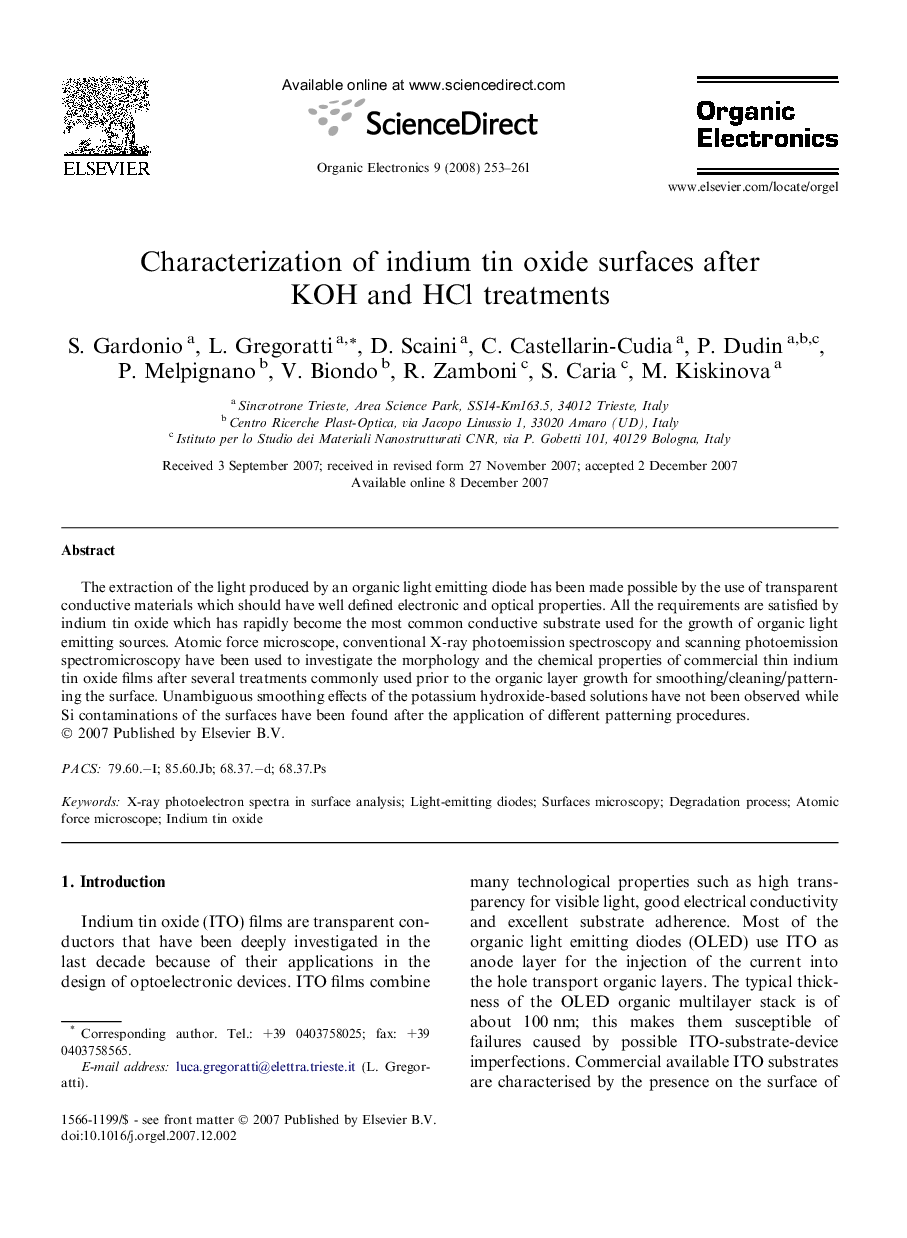| Article ID | Journal | Published Year | Pages | File Type |
|---|---|---|---|---|
| 1268413 | Organic Electronics | 2008 | 9 Pages |
The extraction of the light produced by an organic light emitting diode has been made possible by the use of transparent conductive materials which should have well defined electronic and optical properties. All the requirements are satisfied by indium tin oxide which has rapidly become the most common conductive substrate used for the growth of organic light emitting sources. Atomic force microscope, conventional X-ray photoemission spectroscopy and scanning photoemission spectromicroscopy have been used to investigate the morphology and the chemical properties of commercial thin indium tin oxide films after several treatments commonly used prior to the organic layer growth for smoothing/cleaning/patterning the surface. Unambiguous smoothing effects of the potassium hydroxide-based solutions have not been observed while Si contaminations of the surfaces have been found after the application of different patterning procedures.
